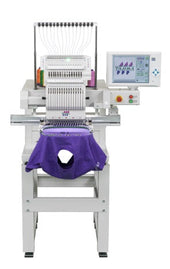
Ergonomic Innovations in Industrial Sewing Machines: Boosting Worker Well-Being in NZ Workrooms
In commercial garment manufacturing in NZ, productivity often comes down to more than just speed and automation. The comfort and safety of the people behind the machines matter just as much.
Businesses that invest in better working conditions for their operators are seeing improvements in output, retention, and overall job satisfaction. One of the most practical ways to achieve this is through ergonomics.
Ergonomic upgrades aren’t just about expensive chairs or fancy equipment. They’re about tailoring tools and environments to reduce strain, support health, and help people do their jobs more effectively.
In this article, we look at how ergonomics is making a difference in sewing environments and how New Zealand-based manufacturers can benefit from these changes.
The Role of Ergonomics in Industrial Sewing Machines
What Is Ergonomics in a Sewing Environment?
In a factory setting, ergonomics means designing workspaces and equipment to support the human body’s natural posture and movements. For sewing machine operators, this can include adjusting table height, modifying chair support, managing lighting, and upgrading machine features.
The goal is to reduce repetitive strain and physical fatigue while making tasks more manageable.
Ergonomic sewing workstations also contribute to better production quality. When operators aren’t distracted by discomfort, they can focus better, work faster, and produce more consistent results. These small adjustments can reduce turnover and improve efficiency without requiring major capital expenses.
How Does Ergonomics Improve Sewing Accuracy?
Improved comfort and positioning allow operators to concentrate longer, reducing mistakes and increasing stitching consistency.
Why It Matters in the NZ Manufacturing Sector
In New Zealand, many manufacturers are exploring cost-effective methods to improve productivity. With staff shortages and rising labour costs, every gain in efficiency helps. At the same time, there is an increased focus on workplace safety in the sewing industry, especially in environments where long hours of seated, repetitive work are common.
Ergonomics fits naturally into this context. It supports both H&S practices for NZ manufacturers and a healthier workplace culture.
Common Workplace Risks for Sewing Machine Operators

Operating industrial sewing machines may not seem hazardous at first glance, but over time, poor posture and repetitive motion take a toll.
Physical Strain and Musculoskeletal Issues
Long periods of sewing in a fixed position can lead to wrist pain, neck stiffness, backaches, and shoulder tension. This often stems from incorrect chair height, table placement, or pedal angle. The effects build gradually but can lead to chronic pain or long-term disability if left unaddressed.
What Is the Most Common Injury From Sewing Work?
Repetitive strain injuries, particularly in the wrists and shoulders, are among the most frequently reported issues.
Operator Fatigue in Textile Production
Fatigue is not just a matter of being tired. In textile production, it can mean slower reflexes, more frequent mistakes, and decreased output. When operators are working in non-adjustable, uncomfortable setups, their ability to maintain concentration throughout a shift is affected.
How Long Should a Sewing Operator Work Without a Break?
Short breaks every one to two hours are often recommended to reduce physical and mental strain.
Repetitive Strain Injury Prevention: Why It’s a Must
Repetitive Strain Injury (RSI) is one of the most common complaints among sewing professionals. It affects the wrists, elbows, shoulders, and even fingers. RSI prevention means eliminating or reducing the repetitive motion patterns that cause strain, and that requires ergonomic changes.
Ergonomic Features to Look For in Industrial Sewing Machines

Automatic Functions and Intuitive Controls
Modern industrial sewing machines now come with built-in features that support operator comfort. These include:
-
Auto thread cutters to reduce hand strain
-
Electronic needle positioning for smoother transitions
-
Knee-lift systems to eliminate the need for constant hand lifting
Each of these features helps minimise repetitive movements, which contributes to both comfort and speed.
Are Automatic Sewing Machine Features Worth the Investment?
For high-use environments, automatic features can reduce operator fatigue and lead to faster, more consistent results.
Adjustable Tables and Machine Positioning
Workstations should allow the table height and machine position to be tailored to each operator. In shared workspaces, flexibility is key. Tables that adjust to different operator sizes and needs go a long way toward reducing physical stress.
Lighting and Visual Comfort
Good lighting doesn’t just reduce eye strain. It also helps operators spot issues faster and maintain high-quality stitching. Ideally, sewing stations should have a combination of overhead and task lighting.
What Kind of Lighting Is Best for Sewing Stations?
Bright, neutral-white LED lighting helps reduce eye strain and improves stitch visibility.
Real-World Ergonomic Machine Options from Sewingtime NZ
Sewingtime NZ provides access to industrial sewing machines that are designed with operator health in mind.
Brother S-7300A "NEXIO" Direct Drive Lockstitch Machine
This machine includes a stepping motor-driven electronic feed mechanism and an auto material thickness sensor. It reduces operator fatigue by adjusting itself to the material in real time. The touch panel allows for easy control, making it user-friendly and reducing the mental load on the operator.
Juki DDL-7000AS-7 Automatic Plainsewer
This model features a direct-drive motor and a semi-dry head, reducing vibration and noise. The automatic thread trimmer and easy-to-use control panel make daily tasks smoother. It’s an option worth considering for businesses that want reliable performance without adding pressure on the operator.
Jack A5E Direct Drive Lockstitch Machine
This machine focuses on ease of use. It includes automatic thread trimming, adjustable speed, and a voice-guided interface. The energy-efficient motor adds another layer of appeal for NZ-based manufacturers seeking practical upgrades.
Which Machine Type Reduces Noise and Vibration in Sewing Operations?
Direct-drive models like the Juki DDL-7000AS-7 are specifically designed to operate more quietly and with reduced vibration.
Each of these models contributes to sewing machine operator health while aligning with productivity targets in commercial garment manufacturing in NZ.
Benefits for Businesses That Invest in Ergonomic Equipment
Fewer Workplace Injuries
By preventing repetitive strain, ergonomic machines and setups help businesses reduce the number of injuries reported each year. Fewer injuries mean less downtime and lower claims costs.
Increased Output and Efficiency
Operators who work comfortably are more likely to maintain steady production without dips in quality. Even small boosts in speed and accuracy can lead to major returns over time.
Does Better Ergonomics Increase Production Speed?
Yes. Operators work more efficiently when discomfort is reduced, which contributes to a steadier workflow.
Lower Turnover and Better Staff Morale
People stay longer in roles where they feel supported and safe. Reducing operator fatigue can help build a more stable, skilled workforce.
What H&S Practices Should NZ Manufacturers Consider?

To maximise the benefits of ergonomic setups, local manufacturers should consider the following steps:
-
Conduct regular workstation assessments
-
Provide adjustable seating and tables
-
Offer training on posture and workstation setup
-
Choose machines that prioritise comfort and intuitive controls
These small changes can have long-term benefits for both staff and the business.
How Can Manufacturers Evaluate Ergonomic Risks?
Start with assessments focused on posture, reach, lighting, and repetitive motion, then prioritise adjustments based on feedback and injury reports.
Addressing Concerns About Costs
Some manufacturers may hesitate to invest in new machines or furniture. But ergonomic upgrades don’t need to be expensive. Many improvements can be done in stages, starting with workstation adjustments and gradually moving into equipment updates.
It’s also worth noting that avoiding upgrades can cost more in the long run, especially with higher staff turnover, increased injuries, and loss of skilled labour.
What Is the ROI of Ergonomic Upgrades in Sewing Facilities?
Reduced injuries, better retention, and higher daily output often result in measurable long-term savings.
Create Better Workrooms
Ergonomic sewing workstations are not just an upgrade for comfort—they make business sense. As the manufacturing sector in New Zealand evolves, attention to workplace safety and efficiency grows more important.
By choosing machines like the Brother S-7300A, Juki DDL-7000AS-7, or Jack A5E from suppliers like us at Sewingtime NZ, businesses can improve operator well-being and productivity without massive investments.
Whether you’re running a small production unit or a large commercial facility, incorporating ergonomics into your workspace is a smart and sustainable step.



